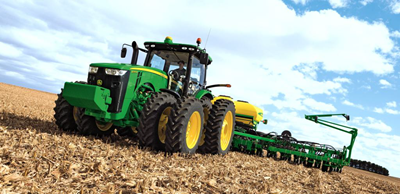Cross-border sales a ‘godsend’ to equipment dealers
By Farms.com Media Team
Planting season in Ontario is around the corner, and you might be pondering the purchase of, let’s say, a 200-plus horsepower used tractor. If so, there are a few factors that seem to point to “now” as a good time to buy.
Making our way through farm show season, we’re hearing that used equipment inventories are still high, and the unique value opportunity for farmers might not last forever.
High incomes saw farmers buy lots of new equipment over the last few years, and with trade-ins, inventories of used machinery jumped accordingly.
“The inventories are there now,” explained Dave Northcott yesterday. “The unique value farmers can look for right now is on equipment that was traded in when the Canadian dollar was at par (with the U.S. dollar value).”

Northcott is sales manager at McGrail Farm Equipment, in Chatham and Comber, Ontario.
“It’s correct that sales have slowed on new equipment, and while the primary reason is the U.S. exchange rate, it’s also because so many farmers bought new machinery over the past three years.”
New combines and tractors are subject to the current exchange rate, because numbers are based on the U.S. price book. And in turn, prices of used items will begin to increase as equipment is coming in that was purchased new, after the Canadian dollar started its slide down.
But while our 75-cent dollar hinders new sales, Canadian equipment dealers are still benefiting from sales to American customers.
“We definitely have been selling more equipment to U.S. farmers,” said Northcott. “Even to the southern states.”
He explained that U.S. farmers are generally buying online, and don’t visit the dealer location, for obvious reasons. And the deal gets done quite seamlessly, without a lot of unexpected or unusual headaches.
“Sometimes there is a perception that trucking the equipment is a pain, or that getting it across the border is difficult,” said Northcott.
“But it’s really not a difficult process or a big deal. And these cross-border sales have been something of a godsend to a number of farm equipment dealers.”